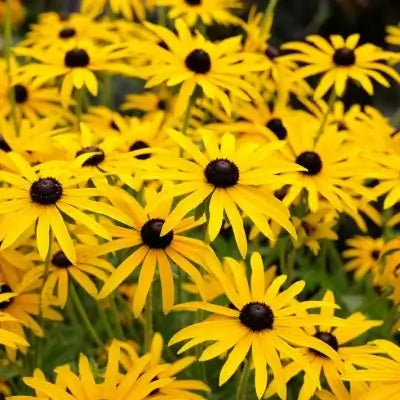
perennial plants
Improves water quality naturally
Provides erosion control benefits
Creates lush, green visual appeal
Thrives in
ZONE 3ZONE 4ZONE 5ZONE 6ZONE 7ZONE 8ZONE 9ZONE 10ZONE 11Planting Season:
Year-RoundThe Cattail Plant is a wetland species with long, slender, spear-like leaves and distinctive brown, cylindrical flower spikes commonly found in marshes, ponds, and other aquatic habitats.
It is a group of 30 tall marsh grasses growing like reeds. Their tall, slender stalks and distinctive brown, fluffy, flowered heads make them an interesting addition to any landscape. They are excellent ways to elevate the beauty of your landscape for those who have a garden near a lake or want to emulate the tranquility of country cottages.
Whether planted alone or in clusters, they add rustic charm and delight to any garden. While they make striking visual statements, they don't overwhelm surrounding foliage or fauna. Instead, their neutral colors and lengthy, slim stalks create a grounding effect ideal for filling space and centering your collection.
Invite more wildlife into your yard with them, which thrive near water and can be integral to a thriving pond ecosystem. They provide safety and coverage for many bird species and serve as food for many herbivorous animals. The good news for many gardeners is that Typha is typically not known to attract bumblebees, so you can add visual depth and beauty to your garden without bringing too many pollinators to the space.
The good news is that they do not require much human interference to thrive. As long as they are put in the right environment, they will flourish effortlessly. Their widespread adaptability makes them an ideal choice for both experienced and novice gardeners.
Sustainable gardening is vital to improving our climate and supporting local ecosystems. They are excellent water purifiers, absorbing excess nutrients while their roots help prevent soil erosion. They also serve as a source for many types of fish, so if you have a pond with marsh feeders, they may enjoy adding them to their aquatic home.
Incorporating them into your backyard ecosystem can support a brighter planet for all animals and contribute to a more sustainable, greener future.
They are plants that naturally grow in water, such as in swamps, shores of lakes or streams, and marshy lands. Suitable for naturalizing water gardens or stabilizing shorelines, They grow best in a site that is in shallow water or one that is continuously saturated.
You should plant them where there is full sun exposure and in nutrient-rich mud. It is effective and equally able to grow in an area with standing water and occasional changes in water levels.
They live year-round and produce new shoots annually arising from rhizomes buried in the ground. They develop shoots in spring, flowers, and seed heads in summer, and die back in the winter, most of the energy being stored in their roots for the next growing season.
They are fast growers and may attain their full mature height of up to 10 feet in one year. Under certain circumstances, it reproduces through the growth of rhizomes and through seed distribution.
Cattail Plants can be propagated through seeds and rhizomes. Their large, fluffy seed heads release seeds that fly away in the wind, and their underground stems, rhizomes, form extensive colonies in favorable circumstances.

Bloom Season
Summer
Bloom/Foliage Color
Brown
Height at Maturity
Under 10 Feet
Care
Cattail plants thrive in wet conditions, which makes them ideal for ponds or marshy areas. Ensure their soil is consistently moist and provides plenty of space for spreading roots. Prune back old stems in late winter to encourage new growth.
Plant Reproduction
Cattail spreads via rhizomes and seeds in waterlogged conditions.
Shipping date depends on the date displayed and chosen when you order from the product's page.
We only accept returns on plants verified dead. If you think your plants have died, we offer a 1 year warranty, please use use this File a Claim Link to verify dead plants and start with return warranty process.




Striking Visual Appeal:
Cattail Plant adds a distinctive vertical element to any garden with its tall, reed-like stems and unique brown flower spikes. It’s perfect for creating visual interest and texture, bringing a dynamic and attractive look to wetland landscapes.
Ideal for Wet Conditions:
Thrives in wetland areas, ponds, and water gardens, making it an excellent choice for damp or marshy landscapes. Enjoy a thriving plant where others might struggle, ensuring lush greenery in water-rich environments.
Air and Water Purification:
Plays a role in filtering and purifying water and air, contributing to a healthier environment. It’s a natural way to enhance the ecological quality of your garden, promoting cleaner surroundings.
Natural Erosion Control:
Helps stabilize soil with its dense root system, preventing erosion in wet areas. It’s a practical and attractive solution for maintaining healthy, stable landscapes, protecting the integrity of your garden's design.
Caring Tips
Each box contains detailed care instructions and information about your product. But here's the basics.
Care Tips
Cattail plants thrive in wet conditions, which makes them ideal for ponds or marshy areas. Ensure their soil is consistently moist and provides plenty of space for spreading roots. Prune back old stems in late winter to encourage new growth.
Light Requirements
Cattail plants thrive in full sun to partial shade. They prefer bright, direct sunlight but can tolerate some shade, especially if they receive sunlight for at least a few hours a day. Ensure they are in a moist, wet environment.
Hardy Planting Zones
3 • 4 • 5 • 6 • 7 • 8 • 9 • 10 • 11
How often should I water my plants?
How do I know if my plant is getting too much or too little sunlight?
What should I do to prepare my plants for winter?
What are the signs that my plant needs fertilizing?
How can I prevent pests from damaging my plants?
How do I choose the right plant for my climate zone?